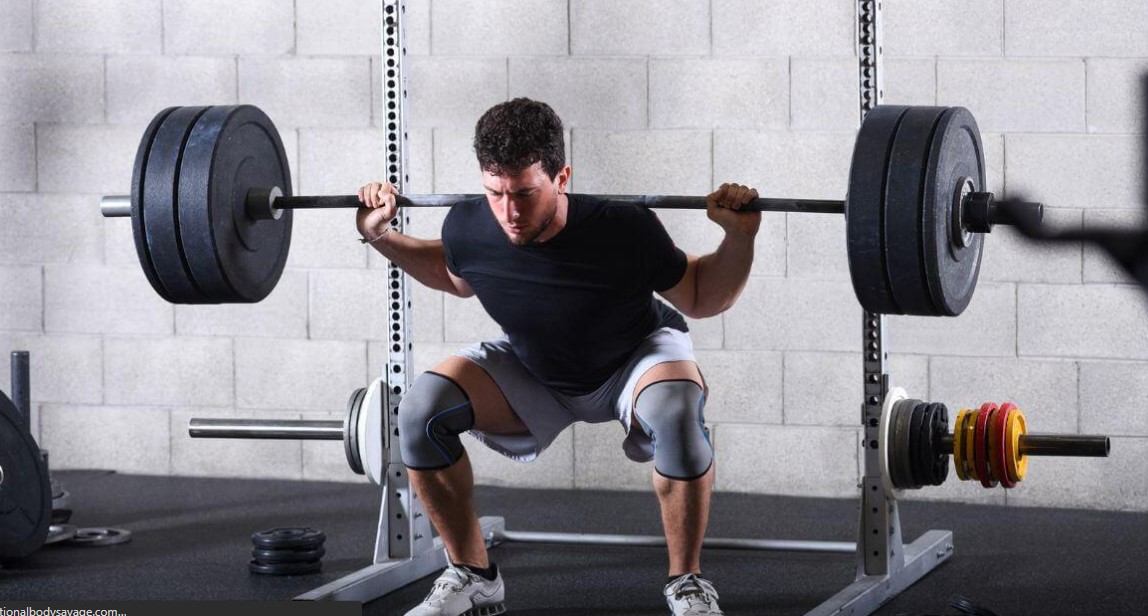Building Muscles and Strength Training
Welcome to the ultimate guide on building muscles and strength training. Whether you're a beginner or have been working out for a while, this comprehensive guide will provide you with valuable insights and tips to help you achieve your fitness goals.
Building muscles and increasing strength require a combination of proper training, nutrition, and dedication. So, let's dive in and discover the key factors for successful muscle growth.
Understanding Muscle Building
Muscle building, also known as hypertrophy, refers to the process of increasing the size and strength of your muscles through specific exercises and training techniques.
When you engage in resistance training, it causes microscopic damage to your muscle fibers. Through the recovery process, these fibers repair and grow, leading to muscle hypertrophy.
Setting Goals and Creating a Plan
To embark on an effective muscle-building journey, it's essential to set clear goals and create a well-structured plan. Determine what you want to achieve, whether it's gaining overall muscle mass, targeting specific muscle groups, or improving strength. Once you have a goal in mind, break it down into smaller, achievable milestones.
Proper Nutrition for Muscle Growth
Proper nutrition plays a crucial role in muscle building. To support muscle growth, you need to consume an adequate amount of calories, with a focus on protein-rich foods. Protein is essential for muscle repair and synthesis.
Include lean meats, fish, eggs, dairy products, legumes, and nuts in your diet. Additionally, carbohydrates and healthy fats provide energy and support overall health.
The Importance of Resistance Training
Resistance training is the cornerstone of building muscles and increasing strength. It involves challenging your muscles by lifting weights, using resistance bands, or performing bodyweight exercises.
Incorporate compound exercises that target multiple muscle groups, such as squats, deadlifts, bench presses, and rows. Aim to progressively increase the weight or resistance over time to stimulate muscle growth.
Effective Exercises for Muscle Building
To build muscles efficiently, incorporate a variety of exercises that target different muscle groups. Include exercises for the chest, back, shoulders, arms, legs, and core.
Some effective exercises include barbell squats, dumbbell lunges, pull-ups, overhead presses, bicep curls, and tricep dips. Focus on maintaining proper form and technique to maximize the benefits of each exercise.
Progressive Overload and Training Intensity
Progressive overload is a key principle in muscle building. It involves gradually increasing the demands placed on your muscles over time. This can be achieved by adding weight, performing more repetitions, or reducing rest periods between sets. Additionally, training intensity plays a vital role. Pushing yourself to the limits during workouts stimulates muscle growth and strength gains.
Rest and Recovery
Adequate rest and recovery are often overlooked but are crucial for optimal muscle growth. Muscles need time to repair and adapt after intense workouts.
Aim for 7-8 hours of quality sleep each night. Additionally, incorporate rest days into your training routine to allow your muscles to recover fully. Proper hydration and stress management also contribute to effective recovery.
Avoiding Common Mistakes
When it comes to building muscles, it's important to avoid common mistakes that can hinder your progress. Some mistakes include overtraining, neglecting proper form, not varying your workouts, and relying too heavily on supplements.
Take the time to educate yourself and seek guidance from fitness professionals to ensure you're on the right track.
Staying Motivated on Your Fitness Journey
Building muscles and strength training require consistent effort and dedication. It's essential to stay motivated throughout your fitness journey.
Set short-term goals, celebrate your achievements, and find a workout routine that you enjoy. Surround yourself with like-minded individuals or join a fitness community to stay inspired and accountable.
Tracking Your Progress
Tracking your progress is essential to evaluate the effectiveness of your training and nutrition plan. Keep a workout journal to record your exercises, weights, and repetitions.
Take measurements of your body and monitor changes over time. Additionally, track your strength gains and endurance improvements. Celebrate milestones and adjust your plan as needed.
The Role of Supplements
While supplements are not necessary for muscle building, they can complement a well-balanced diet and training program.
Protein powders, creatine, and branched-chain amino acids (BCAAs) are commonly used supplements that can aid in muscle recovery and growth. However, it's important to consult with a healthcare professional or nutritionist before incorporating supplements into your routine.
Frequently Asked Questions (FAQs)
Q1: How long does it take to build noticeable muscle?
A: Building noticeable muscle varies from person to person. It depends on various factors such as genetics, diet, training intensity, and consistency. On average, it may take several weeks to a few months to see noticeable muscle growth.
Q2: Should I lift heavy weights or focus on high repetitions for muscle building?
A: Both approaches have their benefits. Lifting heavy weights with lower repetitions can increase strength and stimulate muscle growth. On the other hand, higher repetitions with lighter weights can improve muscular endurance. Incorporate a combination of both into your training routine.
Q3: Can women build muscle as effectively as men?
A: Yes, women can build muscle as effectively as men. While men generally have higher testosterone levels, women can still achieve significant muscle growth with proper training and nutrition. Women should focus on resistance training and adequate protein intake to support muscle development.
Q4: Is it possible to build muscles without going to the gym?
A: Yes, it is possible to build muscles without going to the gym. Bodyweight exercises, such as push-ups, squats, and lunges, can be performed at home or outdoors. Resistance bands are also a convenient tool for muscle-building workouts.
Q5: Can older adults benefit from strength training?
A: Absolutely! Strength training is beneficial for individuals of all ages, including older adults. It helps improve bone density, muscle mass, balance, and overall functional capacity. Always consult with a healthcare professional before starting a new exercise program.
Note: Building muscles and strength training require a systematic approach that combines proper nutrition, resistance training, progressive overload, rest, and recovery. By following the guidelines outlined in this ultimate guide, you'll be on your way to achieving your muscle-building goals. Remember to stay consistent, be patient, and enjoy the process. Get ready to transform your physique and enhance your overall well-being.










































No comments